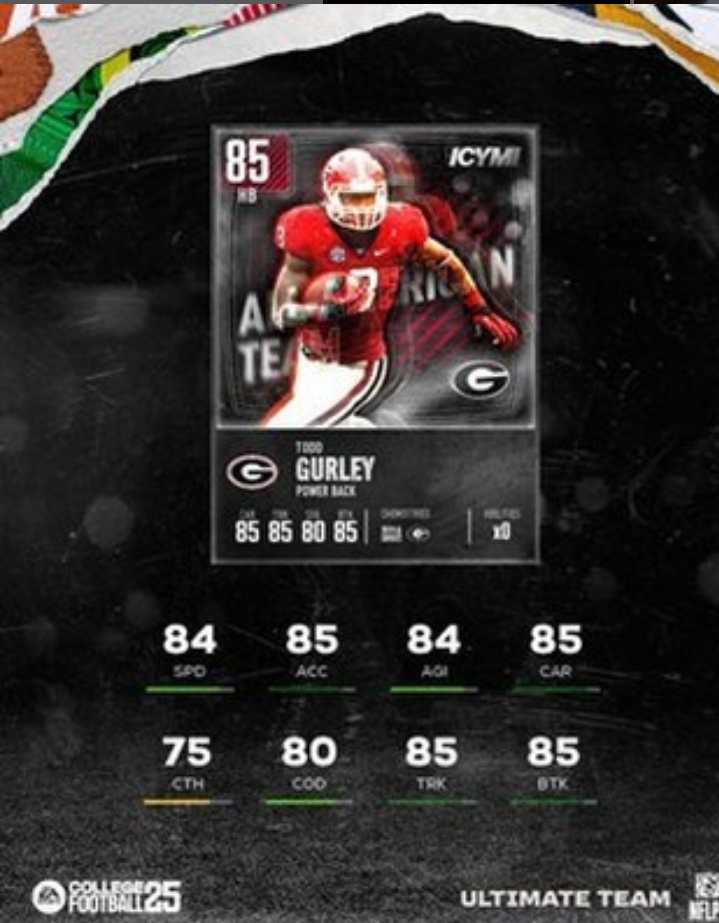Madden NFL 25 was a significant release in the Madden NFL series, marking the 25th anniversary of the franchise. Released in August 2013, the game was developed by EA Tiburon and published by EA Sports. The Madden 25 coins title was available on multiple platforms, including PlayStation 3, Xbox 360, and later on PlayStation 4 and Xbox One, coinciding with the launch of the new console generation. Here’s an in-depth look at the game, its features, gameplay mechanics, and the impact it had on the series.
Celebrating 25 Years of Madden NFL
Madden NFL 25 was a special edition, designed to celebrate 25 years of the Madden NFL franchise, which began with John Madden Football in 1988. To honor this milestone, EA Sports made several key decisions regarding the game's content and features, which aimed to both celebrate the series' history and push it forward into the next generation of gaming.
One of the game's key marketing points was its connection to the history of the franchise. This was emphasized through the inclusion of legendary players and teams from the past, allowing fans to relive iconic moments in NFL history. Additionally, the cover athlete for Madden NFL 25 was chosen through a fan vote, with Barry Sanders ultimately winning the honor, beating out Adrian Peterson in the final round. Sanders, one of the greatest running backs in NFL history, was a fitting choice for a game celebrating the legacy of football.
Gameplay Mechanics and Features
Madden NFL 25 introduced several new gameplay mechanics that were designed to enhance the realism and control players had on the field. One of the most notable additions was the "Run Free" system, which gave players more control over ball carriers. This system introduced precision modifier controls, allowing players to string together moves like jukes, spins, and stiff-arms with greater fluidity and responsiveness. This was particularly impactful in the running game, making it feel more dynamic and rewarding for players who mastered the controls.
The Infinity Engine 2 was another major improvement in Madden NFL 25. Building on the physics engine introduced in Madden NFL 13, Infinity Engine 2 refined player movement and interactions, making collisions and tackles more realistic. Players now reacted more authentically to impacts, and the game featured more realistic animations, reducing the instances of awkward or unrealistic player movements that were sometimes present in earlier iterations.
Connected Franchise Mode
One of the standout features of Madden NFL 25 was the Connected Franchise Mode (CFM), which allowed players to control teams, players, or coaches over multiple seasons. This mode was an evolution of the traditional franchise mode, incorporating elements of online play and social features. Players could compete in leagues with friends or other online players, with the ability to manage every aspect of their team, from drafting and trading players to setting game plans and strategies.
The depth of CFM was a significant draw for fans of the series, offering a level of control and immersion that had not been seen in previous Madden games. The mode also featured a robust progression system, where players and coaches could develop skills and abilities over time, adding a layer of RPG-like mechanics to the game.
Ultimate Team and Microtransactions
Madden NFL 25 continued to build on the success of the Ultimate Team mode, which had become a staple in sports games by this time. Ultimate Team allowed players to collect virtual trading cards of NFL players, which could be used to build custom teams. These teams could then compete in online matches or challenges to earn rewards and improve their roster.
While Ultimate Team was popular, it also drew criticism due to its reliance on microtransactions. Players could purchase card packs with real money, leading to a pay-to-win dynamic that some fans found frustrating. Despite this, Ultimate Team remained one of the most-played modes in the game and continued to be a major revenue generator for EA Sports.
Graphics and Presentation
The transition to the new console generation with the PlayStation 4 and Xbox One versions of Madden NFL 25 brought a significant graphical upgrade. The game featured improved player models, more detailed stadiums, and enhanced lighting effects. These improvements made the game more immersive, especially in broadcast-style presentations that mimicked the look and feel of an actual NFL game.
The game's commentary, provided by Jim Nantz and Phil Simms, was another area of focus. While the commentary was generally well-received, some players felt it became repetitive over time. However, the overall presentation, including the use of authentic NFL broadcasts graphics and sounds, helped create a more engaging experience for fans.
Legacy and Reception
Madden NFL 25 received generally positive reviews from critics, with praise for its gameplay mechanics, especially the "Run Free" system and Infinity Engine 2. The depth of the Connected Franchise Mode and the continued success of Ultimate Team were also highlighted as strengths. However, the game did face some criticism, particularly regarding the microtransactions in Ultimate Team and the occasional bugs and glitches that marred the experience.
The game holds a special place in the history of the Madden NFL series, not only for marking the 25th anniversary but also for bridging the gap between console generations. It set the stage for
Mut coins for sale future Madden titles by introducing features and mechanics that would be refined and built upon in subsequent games.
Conclusion
Madden NFL 25 was more than just another entry in the long-running series; it was a celebration of the history and legacy of Madden NFL games. With its innovative gameplay features, deep franchise mode, and the introduction of new-generation graphics, it successfully honored the past while looking toward the future of the franchise. Whether you were a longtime fan of the series or a newcomer, Madden NFL 25 offered something for everyone, solidifying its place as a memorable entry in the Madden NFL lineage.

